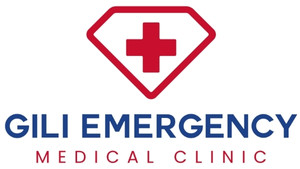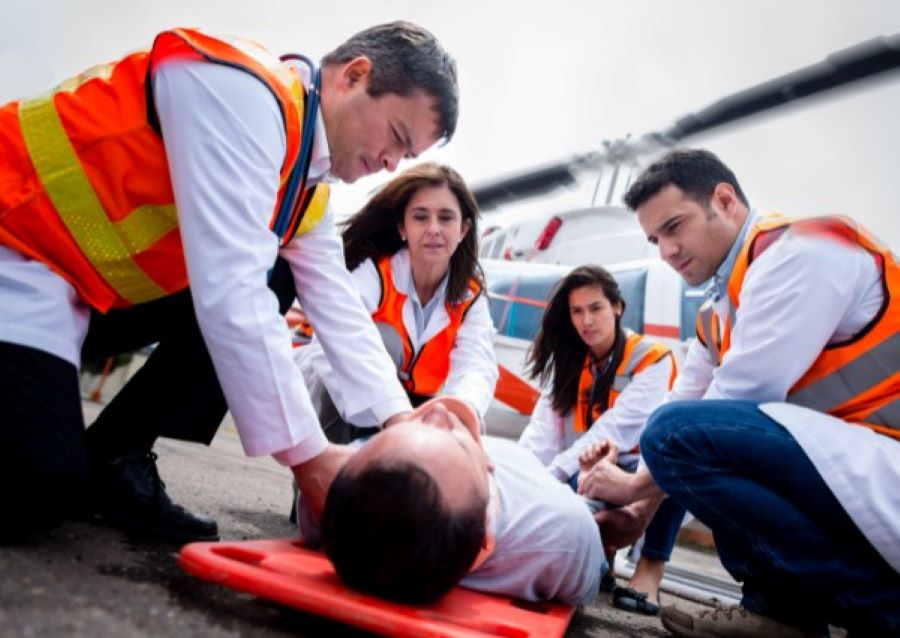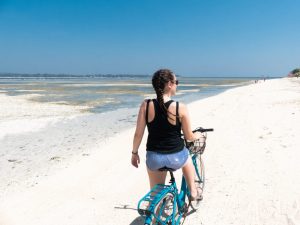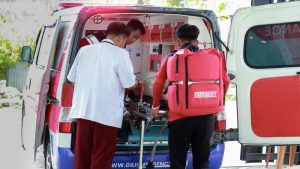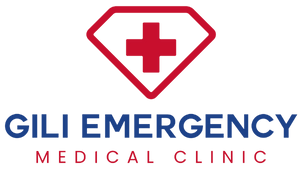Picture this: you’re cruisin’ around Gili Trawangan on your bike, wind messing up your hair, coconut in hand — pure island vibes. Then boom, outta nowhere, you eat sand on a corner, scrape your knee, or that dive from earlier starts making your head spin. Suddenly that paradise vibe flips into “uh oh, what now?”
Relax — this is exactly why Gili T emergency response exists. Behind all the chill beach life and reggae beats, there’s a real, organized medical system keeping everyone safe. From quick first aid to full-blown medical evacuation, the Gili emergency, Gili medical, and Gili emergency clinic teams are the island’s unsung heroes — and they’ve got your back 24/7.
Why Gili Emergency Services Matter
Let’s be real: the Gili Islands are gorgeous, but they’re also kinda isolated. No cars. No huge hospitals. No traditional ambulances zooming around. So when something happens, you’re relying on Gili emergency services to step up — and trust me, they do.
These island medics handle everything from dehydration to diving incidents. They’re trained, fast, and used to helping travelers who weren’t expecting their chill vacation to take a medical detour.
The Gili medical network is basically your lifeline. They assess, treat, and, if needed, coordinate an evacuation to Lombok or Bali. Think of them as your local health guardians — calm, capable, and always ready to save the day.
Inside the Gili Medical & Emergency Clinic Network
Each island in the Gili trio has at least one Gili emergency clinic, open 24 hours. They may not look like massive hospitals, but they’re solid — clean, efficient, and surprisingly well-equipped.
Here’s what they can help with:
- Treating cuts, wounds, and burns (coral injuries are super common)
- IV drips for dehydration (yep, the hangover cure you didn’t know you needed)
- Oxygen for divers or anyone short of breath
- Pain relief and basic medication
- Stitches, injections, and wound care
- Emergency stabilization before transfer off the island
The vibe inside? Calm and friendly. Most Gili medics speak awesome English and know their stuff when it comes to tourists. They’ll patch you up quick, check you’re all good, and probably drop a friendly “drink more water and maybe wear shoes next time, buddy.”
How Gili Emergency Response Works
Alright, let’s say something happens — here’s what the Gili T emergency response process actually looks like.
1. Call for Help
First things first: don’t panic. Call the nearest Gili emergency clinic. Most hotels, dive centers, and cafes have their number pinned on a board or fridge. Tell them what happened, how bad it looks, and where you are. If you’re unsure, landmarks work great — “near the night market” or “by the turtle statue” is enough.
2. Transport to the Clinic
No cars here, remember? So island emergencies move differently. Depending on how serious it is, the Gili emergency team might show up with:
- A stretcher or wheel cart (basically a tropical ambulance)
- A small electric buggy
- Or even on foot if it’s nearby
Locals often help too — Gili people are super caring and quick to respond. It’s community meets medical care, island style.
3. Treatment and Stabilization
The moment you roll up to the Gili emergency clinic, the crew’s on it. No panic, no drama — just smooth, pro-level moves. They’ll give you a quick once-over, check your vitals, maybe hook you up with some oxygen or an IV if you need it. These guys are chill but lightning fast — they’ll clean you up, stop the bleeding, kill the pain, and figure out the game plan.
If it’s just a small thing, you’ll be back cruisin’ on your bike or sipping coconuts in no time. But if it’s something heavy — like a dive gone sideways, chest pain, or a nasty cut — the Gili T emergency response team flips the switch to full mission mode, getting you ready for evac like total legends.
4. Medical Evacuation
When it’s something beyond the island’s scope, evacuation is arranged — fast. Depending on your condition, you’ll go by:
- Speedboat: most common and quick, about 30–45 minutes to Lombok.
- Helicopter: for critical cases when every minute counts.
- Ambulance: once you reach the mainland, you’re taken to a hospital.
The clinic team coordinates everything — from calling the boat to briefing the hospital. They literally handle it all while you focus on staying calm.
Challenges of Medical Emergencies in Gili
Now, no sugarcoating — the Gili emergency system is great, but island life does come with quirks:
- Limited equipment: no MRI, CT scan, or fancy hospital tech.
- Weather issues: rough seas can delay evacuations.
- Signal drops: sometimes you’ve gotta move to get cell service.
- Costs: without insurance, medical evacuations can get pricey.
- Distance: getting to Lombok or Bali still takes time.
So yeah — it’s paradise, but it’s still smart to be prepared.
How to Stay Safe and Prepared
If you want your trip to stay chill from start to finish, do yourself a favor and follow these:
- Get travel insurance that includes emergency evacuation. Non-negotiable.
- Save the emergency numbers in your phone. Don’t rely on Wi-Fi.
- Hydrate, hydrate, hydrate. The sun here doesn’t play around.
- Don’t dive if you’re feeling off — or after too many Bintangs.
- Wear shoes at night. Coral, glass, and jellyfish stings are not souvenirs.
- Turn on your bike light. Night rides are fun until they’re not.
- Know the clinic location near your hotel or villa. Just in case.
Prepared travelers have more fun — and less drama.
Real Story: When Gili Emergency Saved the Day
A friend once told me about a diver who started feeling chest pressure after surfacing. Within minutes, the Gili emergency clinic team arrived with oxygen tanks and a calm, professional attitude that instantly made everyone relax. They stabilized him, got him on a speedboat to Lombok, and he made a full recovery.
He later said, “They weren’t just doctors — they were literal lifesavers.” And that’s the spirit of Gili T emergency response — fast, caring, and quietly heroic.
The Heartbeat of Safety in Paradise
Here’s the real takeaway: Gili T emergency response isn’t just a system — it’s the island’s safety heartbeat. It’s the reason you can dance barefoot under the stars, dive deep into turquoise waters, and explore without fear.
The Gili medical and Gili emergency clinic teams don’t wear capes, but they’re the reason every traveler can enjoy paradise knowing that help’s just a call away — even in the middle of nowhere.
So yeah, before you dive into that perfect island day, do the smart thing: save the numbers, get insured, and keep hydrated.
Because paradise feels a whole lot better when you know Gili T emergency response is watching over it.
